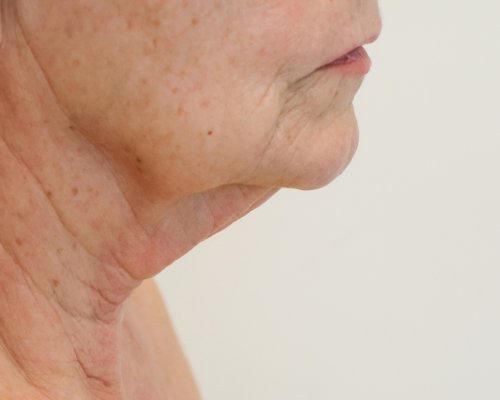Short summary
- with a variety of procedures alone or in combination, we can correct the effects of ageing and inborn imperfections of the neck
- neck lift redrapes and removes excess baggy skin from the neck and redefines the jawline
- platysmaplasty corrects bands of loose muscle noticeable as sharp vertical lines in the neck
- liposuction removes excess fat from under the chin and neck area without scars
- lower face lift removes sagging jowls, redundant skin on the neck and fatty deposits under the chin
- you should expect to be back to work and most normal activities about a week or two after surgical neck rejuvenation
What are the features of the aging neck?
Frequently the neck is the first region to reveal increasing age. With ageing, the facial volume gradually descends, and a well-defined youthful contour of the jaw line and neck is lost. Excess fat accumulates under the chin (double chin) and neck develops crepe like skin with tight vertical bands (platysmal bands). A turkey like neck can form due to accumulation of inelastic skin and sagging soft tissues. In people who have significantly lost weight, redundant loose skin contributes to an exaggerated older neck appearance.
What is neck rejuvenation?
Neck rejuvenation is a procedure or combination of procedures designed to recontour the skin of the lower face and neck, tighten the underlying tissues and muscle, and remove excess fat and skin. The procedure known as cervicoplasty or neck lift redrapes and removes excess baggy skin from the neck and redefines the jawline. People who opt for an isolated neck lift are typically in their forties. Neck lifts are also frequently performed in patients who have recurrent looseness in their neck after a face or neck lift, or male patients who do not want a traditional face lift. Platysmaplasty corrects bands of loose plastysma muscle noticeable as sharp vertical lines in the neck and with liposuction excess fat is removed from under the chin and neck area. Only liposuction may be enough to rejuvenate the neck, for patients with extra fat deposits under the chin or along the jaw line without excess skin.
What is the difference between facelift, lower facelift and neck lift?
The reason that these terms are often seen together is that facelift and neck lift are usually performed in combination. The signs of aging in the two adjacent areas are almost always pronounced to the same degree, and when the face and neck are addressed together a better result can be obtained. Exception to these are patients with a perfect jawline but isolated mid sagging of the neck. They are candidates for a neck lift alone (incisions are mede behind the ears and sometimes an additional incision under the chin to access the middle edge of the platysma muscle). Significant accumulation of soft tissues on the jawline (jowls) will not improve with an isolated neck lift and short scar minimally invasive lower face lift is required. A lower facelift also addresses the mid-face region to some degree and is essentially a combination of a face and a neck lift. With a lower face lift, sagging jowls, redundant skin on the neck and fatty deposits under the chin are usually addressed.
How is neck rejuvenation performed?
An isolated neck lift, liposuction or platysmaplasty can be performed under local anesthetic, but for combined procedure, a general anesthesia offers more comfort and safety. For complete neck rejuvenation, an incision is made under the chin and usually behind the ears, ending in the lower scalp. If necessary, this incision is extended into facelift incision hidden in a natural crease in front of the ear. To permanently remove redundant fat from the neck and under the chin, liposuction is performed first. The skin of the neck is then gently elevated off the underlying structures. The muscles of the neck are approximated and sutured together in the midline to create a smooth well-defined contour of the neck from the inside out. Outer edge of the platysmal muscles secured to an area behind the ears. The skin of the neck is redraped, and excess skin is removed. Sometimes additional augmentation of receding chin is needed to create ideal facial balance.
What is recovery after neck lift?
Some swelling and bruising is expected. Swelling, discoloration and puffiness disappear in approximately two weeks. Sutures that are not absorbed are painlessly removed in the office after a week. You may need to stay in hospital overnight. The bandages and drain will be removed after a day or two. It usually takes about a week to make a full recovery from neck lift surgery, but this varies between individuals and also depends on the techniques used. The scars after a facelift and neck lift tend to heal very well, because of the excellent blood supply of the face and avoidance of tension on the skin closure.
What are the potential risks and complications of neck lift?
Significant complications are scarce and post-operative bleeding is the highest risk. It usually occurs within twelve hours after surgery and is marked by increasing pain and swelling. There is also minimal risk of some injury to the facial nerve. The scars after a facelift and neck lift are virtually invisible on most patients since they are in natural skin creases or in the hair. It is very seldom that anyone else notices these scars.







